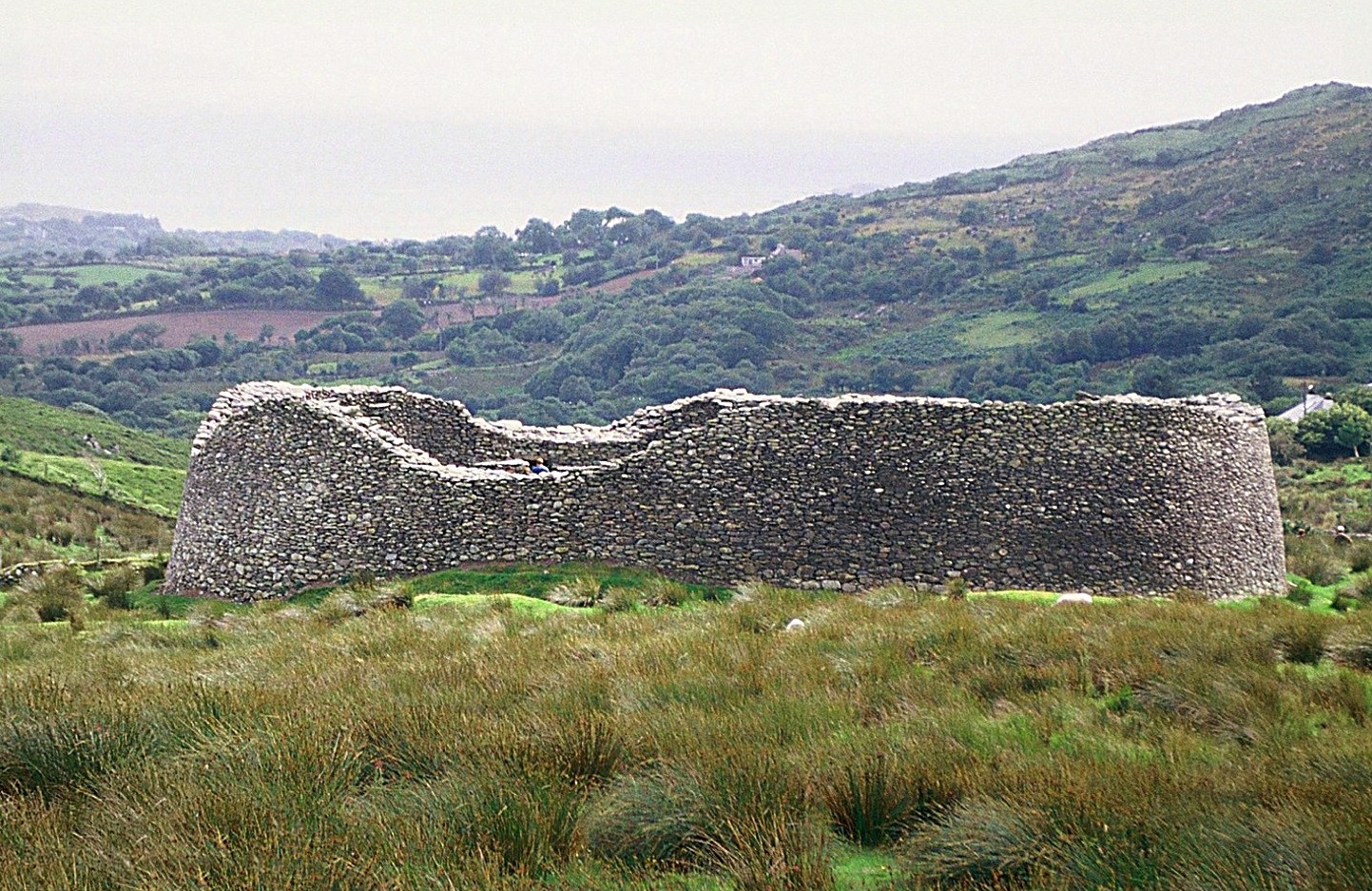Staigue Stone Fort on:
[Wikipedia]
[Google]
[Amazon]
 Staigue or Staig ( or ''Caiseal Stéig'') is a ruined stone
Staigue or Staig ( or ''Caiseal Stéig'') is a ruined stone
 Staigue or Staig ( or ''Caiseal Stéig'') is a ruined stone
Staigue or Staig ( or ''Caiseal Stéig'') is a ruined stone ringfort
Ringforts, ring forts or ring fortresses are circular fortified settlements that were mostly built during the Bronze Age up to about the year 1000. They are found in Northern Europe, especially in Ireland. There are also many in South Wale ...
three miles west of Sneem
Sneem () is a village situated on the Iveragh Peninsula (part of the Ring of Kerry), in County Kerry, in the southwest of Ireland. It lies on the estuary of the River Sneem. National route N70 runs through the town. While the 2016 census recor ...
, on the Iveragh peninsula
The Iveragh Peninsula () is located in County Kerry in Ireland. It is the largest peninsula in southwestern Ireland. A mountain range, the MacGillycuddy's Reeks, lies in the centre of the peninsula. Carrauntoohil, its highest mountain, is al ...
in County Kerry
County Kerry ( gle, Contae Chiarraí) is a county in Ireland. It is located in the South-West Region and forms part of the province of Munster. It is named after the Ciarraige who lived in part of the present county. The population of the cou ...
, Ireland. The fort is thought to have been built during the late Iron Age
The Iron Age is the final epoch of the three-age division of the prehistory and protohistory of humanity. It was preceded by the Stone Age (Paleolithic, Mesolithic, Neolithic) and the Bronze Age (Chalcolithic). The concept has been mostly appl ...
, probably somewhere between 300 and 400 AD, as a defensive stronghold for a local lord or king.Noonan, Damien (2001). "Castles & Ancient Monuments of Ireland", Arum Press.
It is at the head of a valley opening south to the sea, surrounded by a ditch over 8m wide and at present 1.8m deep. The fort's walls are up to 5.5 m (18 ft) high in places, 4 m (13 ft) thick at the bottom and 27.4 m (90 ft) in diameter. The inside is reached through a 1.8m passage roofed with double lintels. Staigue represents a considerable feat in engineering and building. It was built without mortar, using undressed stones. Vertical joints visible in the wall show that gaps were left during the building of the wall to allow access and were filled in later. There is also a tapered, lintelled doorway. Inside is an elaborate network of stairways leading to terraces and corbelled cells in the wall reached by passages.
There is evidence that copper
Copper is a chemical element with the symbol Cu (from la, cuprum) and atomic number 29. It is a soft, malleable, and ductile metal with very high thermal and electrical conductivity. A freshly exposed surface of pure copper has a pinkish ...
was excavated in the surrounding area and it appears to be a place of worship, an observatory and a place of defence.
References
Buildings and structures in County Kerry Archaeological sites in County Kerry National Monuments in County Kerry Forts in the Republic of Ireland {{Ireland-archaeology-stub